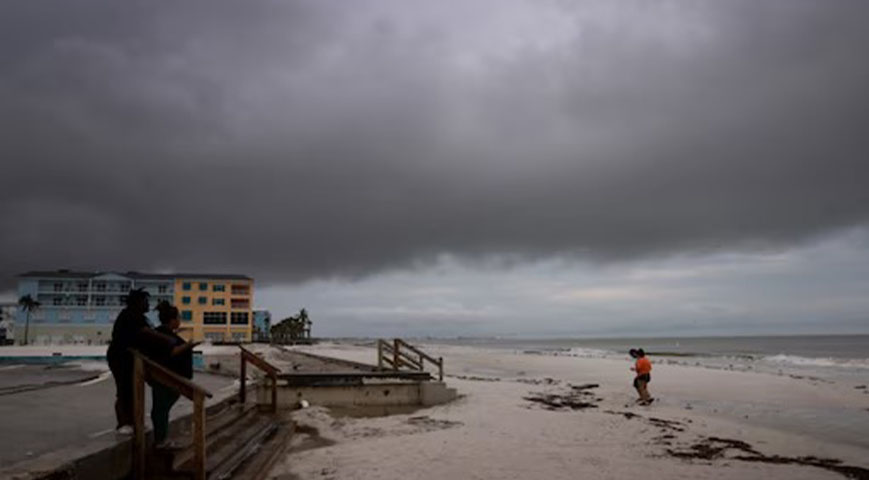Floridians were given one final day on Wednesday to either evacuate or prepare for the catastrophic Hurricane Milton, a Category 5 storm poised to become one of the most destructive to strike Florida’s Gulf Coast.
Over 1 million residents in coastal areas faced mandatory evacuation orders, leading to packed highways and fuel shortages at gas stations, as the region braced for another disaster just two weeks after Hurricane Helene.

Hurricane Milton, with sustained winds reaching 160 mph (260 kph), is on track to hit the densely populated Tampa Bay area, home to over 3 million people.
Did you read this?
Although its path could shift slightly, the National Hurricane Center warned of a potentially deadly storm surge of 10 feet or more across much of the Gulf Coast. Even as the storm crosses Florida, the threat of surges persists along the Atlantic Coast.
Officials, including President Joe Biden and Tampa Mayor Jane Castor, urged residents to leave evacuation zones immediately.
Milton’s rapid intensification, becoming a Category 5 storm in under 24 hours, was fueled by hot sea surface temperatures attributed to climate change. Climate scientist Daniel Gilford of Climate Central highlighted the role of greenhouse gas emissions in warming the oceans and intensifying storms.
Businesses, including airlines and energy companies, have begun shutting down operations in preparation for the hurricane’s impact, which threatens approximately 2.8% of the U.S. GDP.
Evacuations spanned over a dozen coastal counties and affected nearly 1 million residents, including vulnerable groups in mobile homes and assisted living facilities.









